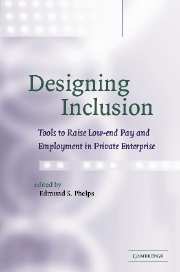Book contents
- Frontmatter
- Contents
- List of figures
- List of tables
- List of contributors
- Introduction
- 1 Low-wage employment subsidies in a labor-turnover model of the “natural rate”
- 2 Taxes, subsidies and equilibrium labor market outcomes
- 3 Learning-by-doing versus on-the-job training: using variation induced by the EITC to distinguish between models of skill formation
- 4 Unemployment vouchers versus low-wage subsidies
- Index
1 - Low-wage employment subsidies in a labor-turnover model of the “natural rate”
Published online by Cambridge University Press: 22 September 2009
- Frontmatter
- Contents
- List of figures
- List of tables
- List of contributors
- Introduction
- 1 Low-wage employment subsidies in a labor-turnover model of the “natural rate”
- 2 Taxes, subsidies and equilibrium labor market outcomes
- 3 Learning-by-doing versus on-the-job training: using variation induced by the EITC to distinguish between models of skill formation
- 4 Unemployment vouchers versus low-wage subsidies
- Index
Summary
Abstract
This paper models two kinds of wage subsidy in a model of the natural rate having a continuum of workers ranked by their productivity – a flat wage subsidy and a graduated wage subsidy, each financed by a proportional payroll tax. In the small open economy case, with the graduation as specified, we show that both schemes expand employment throughout the distribution; for those whose productivity is sufficiently far below the mean, take-home pay is unambiguously up, though the tax financing lowers take-home pay at the mean and above. For any particular class of workers paid the same amount of the wage subsidy under the two plans, the graduated plan expands employment more. In the closed economy case, employment is increased for workers whose productivity levels are below or equal to the mean but the interest rate is pulled up, and that may cause employment to fall at productivity levels sufficiently far above the mean.
There is considerable agreement that the extraordinarily low commercial productivity of active-age persons in the lower reaches of the distribution relative to median productivity is the number one social problem of our time. In creating a huge wage gap it makes the less productive incapable of supporting a family, or in some cases themselves (in a way that meets community standards of decency at any rate), and having access to mainstream community life.
- Type
- Chapter
- Information
- Designing InclusionTools to Raise Low-end Pay and Employment in Private Enterprise, pp. 16 - 43Publisher: Cambridge University PressPrint publication year: 2003
- 2
- Cited by



